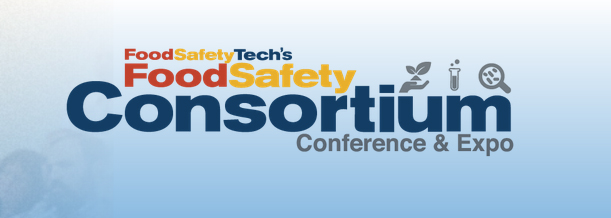Recalls are something that food brands plan for but hope to never experience. They are an important public safety issue, but they also have a significant economic impact as well. At best, a product recall is a benign mistake that causes little more than aggravation and inconvenience for a few angry customers. At worst, the consequences can be tragic, both in terms of human and financial impact.
Industry research conducted by the Food Marketing Institute and Grocery Manufacturers Association places the average cost of a single recall at $10 million. That calculation includes only the direct costs of a recall. For the full, long-term costs, including direct and indirect liabilities, you’d need to further account for the immediate loss in sales, litigation costs, as well as any long-term damage caused from a loss in consumer confidence in your brand.
Consumers’ relationship with food is ever changing. They demand transparency about its contents, origin and safety, and for good reason. The World Health Organization estimates that nearly 1 in 10 people are sickened yearly from eating contaminated food, leading to 420,000 deaths. Consumers have long memories for businesses that poison them. The larger the size of your company and the more attention it receives, the potentially greater impact on your long-term business prospects. With the recent E. coli outbreaks tied to romaine lettuce, food safety is top of mind for consumers, and it is impacting entire market segments.
One of the easiest ways to prevent recalls associated with perishable foods is to ensure that food and beverage products are safely produced and continually kept at the right temperatures. Sounds easy, right? In reality, it is far from it.
Gaining end-to-end supply chain visibility can help you prevent costly recalls altogether. Data that today’s technology provides will be important for mitigating risk and protecting a brand’s reputation.
Get Proactive
The idea of prevention is paramount to FSMA. It’s clear that the FDA expects that once a producer or supplier discovers that something has gone wrong, they go back and figure out exactly what happened so that they can put measures in place to prevent it from happening again.
While current FDA guidelines and various EU safety regulations generally require that food can be tracked one step up and one step down the supply chain, this remains a very siloed approach to traceability and is open to risks—risks that producers, food retailers and restaurant brands cannot afford to take.
For USDA-regulated products, HACCP employs a similar process. Prevention is key, and if your monitoring measures miss an issue that could compromise food safety, you’ll need to go back and determine the root cause of the problem.
A cold food manufacturer can do a lot to control risks under its own roof, but how do you avoid costly recalls with ingredients or with temperature abuse after a product leaves the facility? Regulations or not, knowing where your ingredients and food products come from and being assured of their safety is critical in protecting your brand and company from the financial and reputational damage caused by a food recall.
Looking forward in the supply chain, maintaining the cold chain is necessary for many products, including fresh produce, frozen and deep frozen foods, and also those that must be kept at room temperature but still require temperature control. Even if you and your suppliers are incredibly careful and practice prudent safety measures, you may not have full visibility over who else is handling your products. If temperature mishandling by someone else necessitates a food recall or results in a food safety incident, it is still associated with your brand, even if you weren’t the direct culprit.
For many food retailer and restaurant chains, it is common practice for them to share their internal food safety guidelines with their suppliers and partners, and require that they prove a product’s source of origin, lifespan, how those products are stored and transported from point A to point B, as well as the environmental conditions in which foods are kept. Allowing suppliers and logistics partners to self-manage their supply chain does nothing to proactively ensure that they and a food brand aren’t in the headlines due to a food safety incident.
Digitally Connect the Supply Chain
This is where technology and data can play a critical role in managing your temperature-controlled food and beverage products. More and more food enterprises are utilizing Internet of Things (IoT) technologies that talk to the internet so they can collect supply chain data into dashboards and access it on demand.
IoT can be considered as a central nervous system for the supply chain. Through IoT, you can track shipments or trace temperature, moisture or other factors that can have an impact on food quality. Not only can you discover problems more rapidly with this technology, you can narrow the scope of recall. For businesses transporting temperature-sensitive products, this means they can manage product movement data in real-time and respond to issues before they lead to a food safety incident or product waste.
From a food production standpoint, IoT solutions can substantially reduce recalls from issues like labeling, processing and contamination. One of the primary causes of a food recall is microbiological in nature, with the majority of cases involving fruits and produce. IoT data can help detect issues further upstream in the supply chain and, since products will change hands several times before they reach a consumer, it can give you a complete picture of the product’s lifecycle—something that cannot be done with clipboards and ad hoc or periodic inspections.
Through cloud technology, food businesses can connect their end-to-end supply chain, analyze data, discover trends, illuminate weak points and directly respond to them to improve their overall processes.
Track and Trace Everything
Continuous and consistent tracking and tracing through technology not only simplifies recalls, it helps prevent them altogether. The only thing worse than being faced with a food recall is not knowing which products are affected or where exactly they are located.
Real-time temperature monitoring and product movement traceability technology can give you the confidence that foods are continuously kept at their required temperatures and remain safe for consumption. When you need to track and trace an ingredient or product, time is often of the essence. Delays may mean more resources and efforts are spent in producing something that may be rejected, or worse, recalled, or that the potentially impacted product isn’t isolated in time.
The digital integration of suppliers and other partners is vital if a food enterprise wants to have more control over its cold chain. Consumer demand for social responsibility and ethical business operations means that businesses need to provide greater visibility and transparency into the origins of their products. With today’s supply chains, having data—essentially, a horizontal IT layer that lets people share and access data—removes the barriers of communication among stakeholders.
IoT serves as a tool to remove the barriers to collaboration between food manufacturers, food logistics businesses, restaurant and food retail chains, regulatory agencies, and the end consumer. It increases the transparency of information and helps to deliver better products throughout the food supply chain.
Get Started
Acknowledging that most food companies have limited resources, food brands can still face their efforts only on the suppliers and customers that are of the greatest concern. Often this means looking at the combination of “high-risk product” with “high-risk supplier/partner” and prioritizing that part of the supply chain. This prioritization will help food brands allocate their resources and focus their time and money on the highest risks to their customers and brand. Once they’re able to reap the benefits of a preventive food safety program, they’re better able to justify allocating additional resources to other parts of the cold chain.
While IoT, cloud monitoring and traceability technology has been around for some time, real-time data is now becoming standard. Traditionally, the cost of IoT technology and data infrastructure could be quite expensive. However, different business models like subscription are on the rise, which lower the cost of entry for new prospects and can connect a broader range of products, not only high-value goods.
Although many food brands already have some proactive food safety programs in place, it only takes one incident to lead to a major food recall—even if it isn’t your company’s product—and it can negatively impact your business.
As an industry, food brands need to continue raising the bar in terms of what is considered standard and “best practice” when building an effective, proactive food safety strategy. Utilizing best-in-class technology can ensure the delivery of safe foods to the market, prevent recalls, protect business interests, and most importantly, protect consumers.















